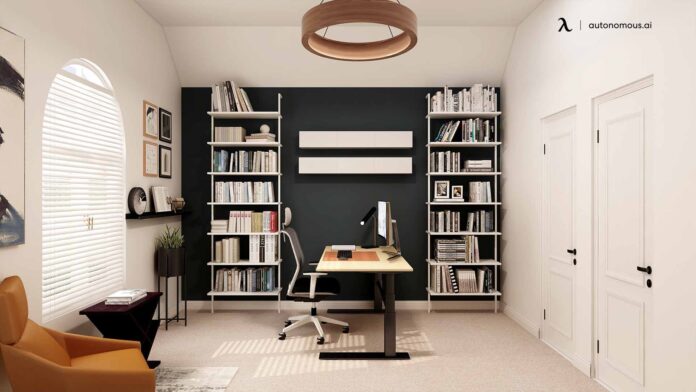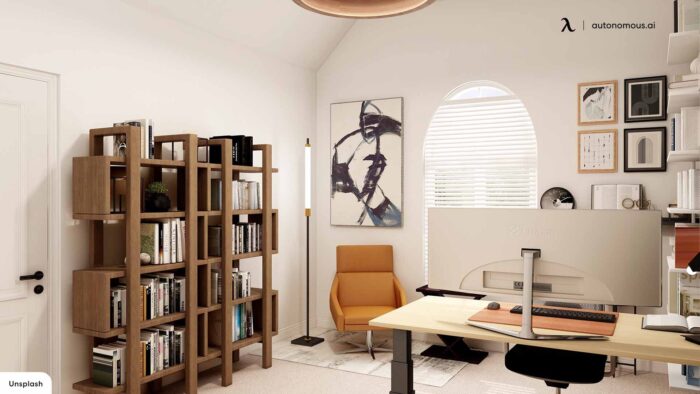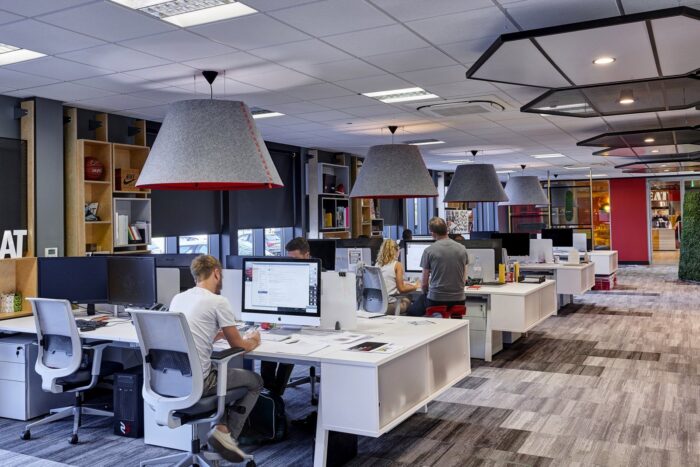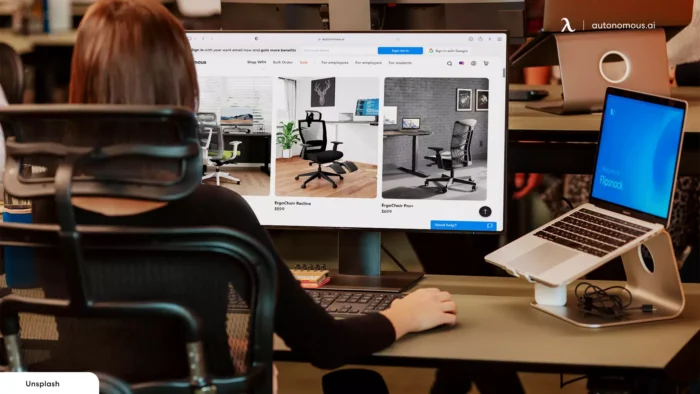
The placement of your office desk can significantly influence your workflow, productivity, and overall job satisfaction. Thoughtful desk arrangement, along with other office furniture, can enhance focus, reduce distractions, and create a more efficient working environment.
Here, we explore the various factors to consider when positioning your desk and how it can positively impact your workday.
1. Ergonomics and Comfort
Optimal Desk Height
Ensuring your office desk is at the correct height is crucial for maintaining good posture and preventing discomfort. A desk that is too high or too low can lead to strain on your neck, shoulders, and back. Ideally, your desk should allow your forearms to rest comfortably at a 90-degree angle when typing, with your feet flat on the floor.
Proximity to Essential Office Furniture
Position your desk close to essential office furniture, such as filing cabinets, printers, and bookshelves. This reduces the time spent getting up and moving around, thereby maintaining your workflow and minimizing disruptions. Keeping frequently used items within arm’s reach helps streamline tasks and boosts efficiency.
2. Natural Light and Views

Maximizing Natural Light
Natural light is a key factor in enhancing productivity and mood. Positioning your desk near a window can provide a steady stream of natural light, reducing the reliance on artificial lighting and creating a more pleasant work environment. However, avoid placing your desk directly in front of or behind the window to prevent glare on your screen.
Scenic Views
If possible, arrange your desk to face a window with a view. Looking out at nature or an interesting cityscape can provide a mental break, reduce eye strain, and improve overall well-being. A pleasant view can also inspire creativity and reduce feelings of stress and confinement.
3. Minimizing Distractions
Quiet Zones
Place your desk in a quieter part of the office to minimize noise distractions. Avoid high-traffic areas such as near the entrance, break rooms, or restrooms. A quieter location helps maintain focus and concentration, crucial for tasks that require deep thinking and minimal interruptions.
Facing Away from Distractions
If your office is in a bustling environment, position your desk so that you face away from distractions. This can include windows overlooking busy streets or open areas where colleagues frequently gather. Facing a wall or using partitions can create a more secluded and distraction-free workspace.
4. Workflow Efficiency

Easy Access to Technology
Ensure that your desk placement allows for easy access to electrical outlets, internet connections, and other technological necessities.
Efficient cable management can prevent a tangled mess and reduce the risk of accidents. Having your technology easily accessible keeps your workspace tidy and functional.
Collaborative Spaces
If your work requires frequent collaboration, consider placing your desk near common areas or meeting rooms. This facilitates easier communication with colleagues and quick access to collaborative spaces without disrupting others. For those who often work in teams, proximity to these areas can significantly enhance workflow.
5. Personalization and Comfort
Personalized Space
Your desk is your personal workspace, and its placement should reflect your needs and preferences. Add personal touches, such as photos, plants, or artwork, to create a space that feels comfortable and motivating. A well-personalized desk can boost morale and make you feel more at ease during the workday.
Comfort Considerations
Ensure that your desk placement allows for proper ventilation and temperature control. Avoid placing your desk directly under air conditioning vents or heaters, as this can lead to discomfort. A well-ventilated and temperature-controlled workspace promotes comfort and productivity.
6. Office Layout and Design

Open Plan vs. Private Offices
In an open-plan office, desk placement should consider the overall layout to balance collaboration and privacy. Desks can be arranged in clusters to facilitate teamwork or in rows to maximize space. In private offices, desk placement can be more flexible, focusing on personal comfort and efficiency.
Space Utilization
Effective use of space is essential for a functional office layout. Ensure that the placement of desks and other office furniture allows for easy movement and accessibility. A well-organized layout can improve the flow of the office, making it easier for employees to navigate and reducing the potential for congestion.
7. Safety and Accessibility
Clear Pathways
Maintain clear pathways around your desk to ensure safety and accessibility. This is especially important in case of emergencies, where quick evacuation might be necessary. Avoid clutter and ensure that cables and office supplies do not obstruct walkways.
Ergonomic Accessories

Consider the addition of ergonomic accessories such as footrests, monitor stands, and keyboard trays to enhance comfort. Proper ergonomic support can prevent injuries and promote a healthier work environment. The strategic placement of these accessories in conjunction with your desk can optimize your overall setup.
The placement of your office desk, alongside other crucial office furniture, plays a pivotal role in shaping your workflow and overall work experience.
By considering factors such as ergonomics, natural light, minimizing distractions, and efficient use of space, you can create a workspace that promotes productivity, comfort, and well-being. Taking the time to thoughtfully arrange your desk can lead to a more enjoyable and efficient work environment.








